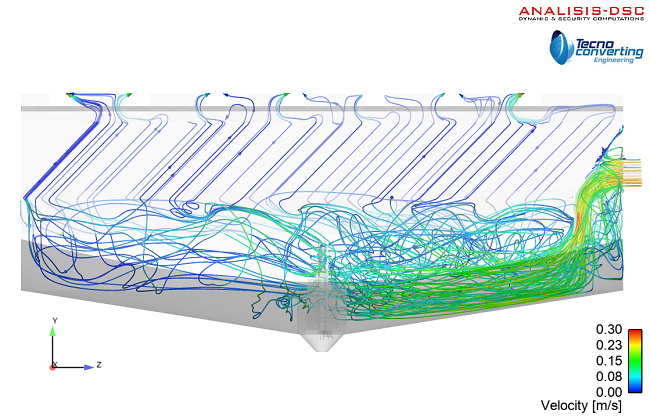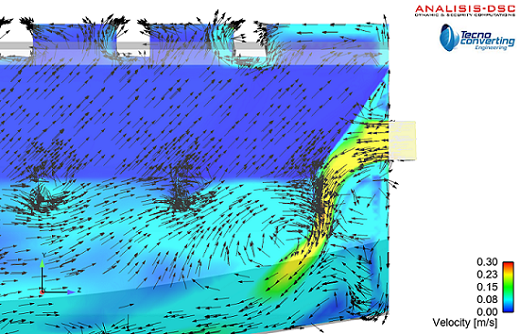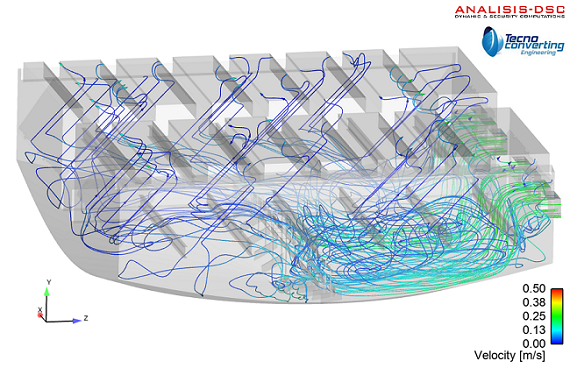
What is the corrected Hazen velocity or corrected upward velocity?
posted in Technical Articles by TecnoConverting
A while ago, a client asked me a very interesting question: did we take the corrected Hazen velocity or corrected upward velocity into account when calculating the properties of lamella clarifiers in our projects.
First of all: What is corrected the Hazen velocity or corrected upward velocity? Literature about water purification sometimes mentions this theory stating that lamellar modules do not work properly on their whole length. It is true that only 80-90% of the length of the lamellar actually works, so based on that, the normal parameter of Hazen velocity is not correct, because we would have to deduct the percentage of height that does not work. Therefore, the resulting Hazen is always too high. But is this true? Does it really happen? The answer is yes. Our CFD simulations revealed that part of the lamella does indeed not work properly: when water comes in, the flow is not continuous nor laminar, it needs this first part of the lamella to act as a tranquilizer before it starts working properly. For those who like statistics, we could say that the Pareto Principle applies (80/20) even to lamellar modules.
As to whether or not we take this parameter into account in our calculations, the answer is yes. It is an easy problem to solve to achieve better performance. But it is important to bear in mind that if we deduct this 20% from the height, and the modules are sized according to this new parameter, then the number of lamellar modules will increase, making the equipment less competitive in price. No one takes into account the corrected Hazen velocity, so your installation will always be more expensive.
From my technical point of view, the corrected Hazen velocity is a factor that has to be considered, especially in cases with high Hazen velocities. However, with the average 0.6 m/h sizing velocity, it is not necessary.
Lately, while reviewing some bibliography, we have noticed that some authors do not only deny this correction factor, but also state that before entering the lamella, the water has already adopted a laminar. On our side, we proceeded to some verifications and detected the following:
- If the lamella is inclined in the direction of the water inlet flow, then the corrected Hazen velocity applies because the water enters the lamella in a turbulent flow and needs the first part of the plate before adopting a laminar flow.
- If the lamella inclination is opposite to the water inlet flow, then as the water collides against the plate inclination, the turbulence of the flow is already being corrected, which means that when it enters the lamella, the flow is already laminar.
Therefore, everything depends on how the lamella is placed according to the inlet water flow.
I hope this article was helpful.


